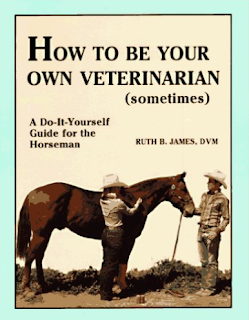Received a call early Monday morning from a Texas Ranger friend of mine. Knew it couldn't be good news that
early, and it wasn't. A friend of mine, Roy 'Dean' Wood of Chaparral, New Mexico just passed away. Dean was a
Vietnam Veteran, itinerant Cowboy and I came to know him when we worked together as Army Range Riders, in which he
always said it was the best paying Cowboy job he ever had.
Dean, the son of one of the last of the Army Remount soldiers, was an icon in the Tularosa Basin. Everyone knew
Dean and if they didn't they would just describe him as that lean old Cowboy with the brown gus hat and big
mustache who could charm a rattlesnake into a milk jug. As he used to always tell the ladies as he took off his
hat to shake their hand...."the second time I see you, I'll need a hug." I wish I would have paid more attention
to his stories but I do remember when he told me its best to have a tall boot when gelding cats. Apparently he
had some experience as a boy shoving cats head first into one of his Pa's boots in order to geld those
tomcats.
I worked several thousand plus acre fires in BLM grazing units with Dean despite him having bronchitis
and being close to 70 years old then, there was no quit in him at all. Some people worried about his health as he
was "damn close to 70" as he put it, and suggested that he cut back on red meat. Dean would point to his mouth and say "Chicken
will never pass these lips." And according to Dean, mashed potatoes were a vegetable.
I'll never forget standing around a fire pit during a post wedding party with Dean, a local Texas Ranger Sergeant
and another gent and having Dean pull out and start passing around a bottle of Wild Turkey 101. Then seemingly
out of nowhere Dean's wife appears like a Choctaw ghost coming through the smoke of the fire, grabbing Dean's ear
(she had practice as she was a school teacher) and yanking Dean back to the truck for a short ride home - although
I'll just bet Dean didn't think it was such a short trip.
Dean being the elder Range Rider gave us all a scare a time or two, usually when he was riding the fenceline in
the Sacramento mountains looking for lost cattle or to cut sign of poachers and didn't make it back until late
because he had two flats on his truck or trailer and was out of radio range.
Another time, on a cold moonless December night I received a call from dispatch that a cattle hauler over turned
on the highway and they needed Range Riders to gather over 70 head that were loose and becoming a traffic hazard.
I called Dean and we decided to meet North of the accident site in the direction the cattle were heading and we
would unload our horses and push the cows to a break in the fence and have a local rancher meet us with some
portable panels. We got to the accident site, drove north and found the leading edge of the herd, then turned our
trucks around to use our headlights to light up the cows as we unloaded our horses, when a little sports car came
speeding down the highway and T boned Dean's rig as he was turning. Dean was shook up by the impact into his
truck, luckily the bed of the truck, and his first words were to ask about his horse which was fine. The sports car driver wasn't okay - we got
him an air Medevac to Las Cruces. Dean was back to work the next day or two, albeit with bruises up and down his
arms and madder than a wet hornet because of the damage to his Super Duty.
One of my fondest memories of Dean was when at the end of a shift I would get a radio call: "Range Rider 74, Tio
Jaime (nickname for a local Rancher and close friend of Dean's) would like you to stop at the 54 Ranch to have a
taste with us." Thankfully this was only a few times a year because it always resulted in the next day being hard
to get through. My saving grace was the ranch was adjacent to open desert where I could drive straight home and
only be a hazard to coyotes and jackrabbits.
I wish I would have made a better effort to get out to see Dean one last time before he crossed over. He sure as
hell would have gave me something to think about.

























